The book “The Land of Open Graves” by Jason De León, with photographs by Michael Wells, explores the human toll of migration across the Sonoran Desert.
1.1 Background and Historical Context
The Sonoran Desert has become a deadly crossing point for migrants due to U.S.-Mexico border policies. Systematic violence and harsh conditions have transformed the region into a graveyard, with over 7,000 deaths since 2001. The book examines how policies like Prevention Through Deterrence have failed to deter crossings but succeeded in increasing suffering. Historical context reveals how border enforcement strategies have historically targeted vulnerable populations, leading to a humanitarian crisis. The desert’s extreme environment, combined with political measures, has created a landscape of death and disappearance. This background underscores the urgency of understanding migration as a complex, deeply human issue.

1.2 Purpose and Scope of the Book
The purpose of “The Land of Open Graves” is to expose the devastating human consequences of U.S.-Mexico border policies. By combining anthropological research and haunting photography, the book examines the lives lost and the suffering endured by migrants crossing the Sonoran Desert. Its scope extends beyond statistics, delving into personal stories and the broader historical context of migration. The book aims to humanize the crisis, challenging readers to confront the ethical and political failures that have turned the desert into a graveyard. It serves as a critical examination of border enforcement strategies and their deadly impact on vulnerable populations.
Author and Photographer Background
Jason De León, an anthropologist, and Michael Wells, a photographer, collaborate to document migration’s human cost through research and visual storytelling in “The Land of Open Graves.”
2.1 Jason De León: Biography and Contributions
Jason De León is a prominent anthropologist specializing in migration studies, particularly focusing on the U.S.-Mexico border. His work combines ethnography, archaeology, and forensic science to document migrant experiences. De León is known for his interdisciplinary approach, which sheds light on the humanitarian crises faced by migrants. Through his research, he has exposed the harsh realities of border crossing, emphasizing the human cost of immigration policies. His contributions have significantly influenced academic and public discourse on migration, advocating for a more compassionate understanding of this complex issue. His work in “The Land of Open Graves” has been widely recognized for its emotional and academic depth.
2.2 Michael Wells: The Role of Photography in the Book
Michael Wells’ photography in “The Land of Open Graves” serves as a powerful visual narrative, complementing Jason De León’s text. His images capture the stark realities of migration, documenting abandoned belongings, human remains, and the harsh desert environment. Wells’ work humanizes the statistics of migrant deaths, offering a poignant reminder of the lives lost. The photographs not only illustrate the physical challenges but also evoke an emotional response, bridging the gap between data and personal stories. His contribution is essential in conveying the book’s message, making the humanitarian crisis tangible and unforgettable for readers.
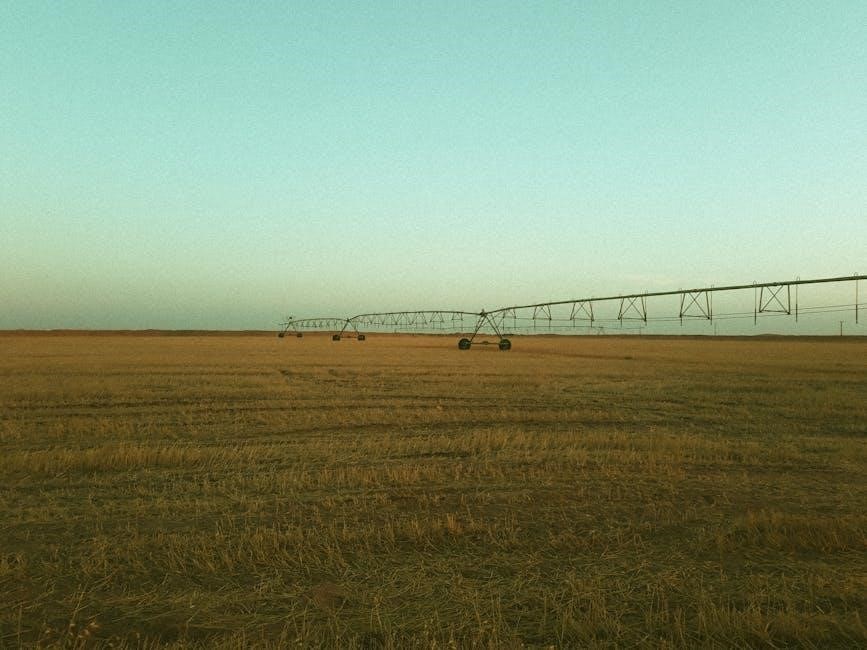
Overview of the Book
“The Land of Open Graves” examines the human consequences of U.S. border policies, blending anthropology and photography to convey the humanitarian crisis of migration through graphic, haunting imagery and personal stories.
3.1 Book Structure and Key Chapters
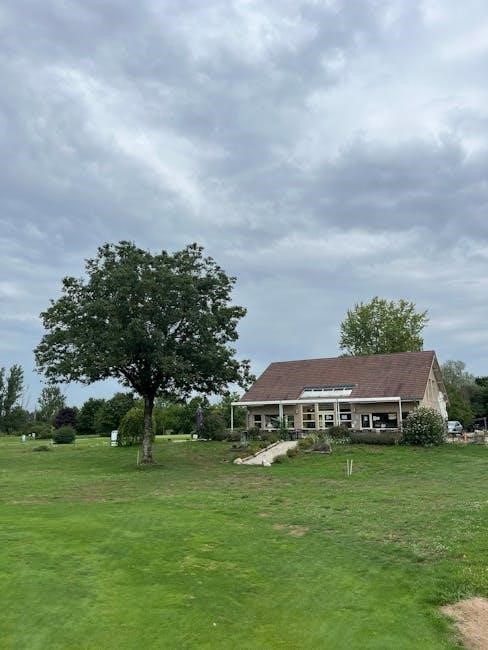
“The Land of Open Graves” is structured to provide a comprehensive understanding of migration’s human cost. It begins with historical context, detailing how U.S. policies have evolved. The book then delves into personal stories of migrants, highlighting their struggles and sacrifices. Key chapters include an analysis of the Sonoran Desert’s role as a deadly barrier and a critical examination of border enforcement strategies; The title reflects the desert’s grim reality as a graveyard for countless migrants. Through vivid narratives and haunting imagery, the book underscores the ethical and humanitarian crises embedded in immigration policies. Each chapter builds on the last, creating a compelling narrative of loss and resilience.
3.2 The Significance of the Title “The Land of Open Graves”
The title “The Land of Open Graves” poignantly reflects the Sonoran Desert’s role as a final resting place for thousands of migrants. It emphasizes the harsh realities faced by those attempting to cross into the U.S., where the desert’s extreme conditions often lead to tragic deaths. The term “open graves” symbolizes the unmarked and forgotten burial sites scattered across the landscape, highlighting the invisibility and dehumanization of these individuals. The title serves as a powerful metaphor for the broader humanitarian crisis at the border, urging readers to confront the devastating consequences of U.S. immigration policies and the loss of countless lives.
Key Themes and Messages
The book highlights the human cost of migration, the impact of U.S. border policies, and the Sonoran Desert’s deadly environment, emphasizing societal structures and environmental interactions.
4.1 The Human Cost of Migration
The human cost of migration is poignantly illustrated through personal stories of migrants in The Land of Open Graves. These narratives reveal the profound emotional and physical toll faced by individuals attempting to cross the Sonoran Desert. Many migrants experience extreme dehydration, exposure to harsh weather conditions, and the constant threat of death. The book also sheds light on the psychological impact, including the fear of being separated from loved ones and the trauma of encountering the remains of those who did not survive. These stories underscore the immense sacrifices made by migrants in pursuit of a better life.
4.2 The Impact of U.S. Border Policies
U.S. border policies, particularly “prevention-through-deterrence,” have significantly increased the risks faced by migrants. By funneling crossers into remote, dangerous areas like the Sonoran Desert, these policies exacerbate the likelihood of death. The book highlights how such strategies, aimed at deterring illegal crossings, instead result in higher mortality rates. Migrants are forced to traverse harsh terrains, leading to dehydration, exposure, and exhaustion. These policies, critics argue, disproportionately affect vulnerable populations and fail to address the root causes of migration. The book underscores the moral and ethical implications of such policies, framing them as a contributing factor to the humanitarian crisis unfolding at the border.
4.3 The Role of the Sonoran Desert in Migration
The Sonoran Desert plays a critical role in migration as a dangerous yet unavoidable passage for thousands seeking to cross into the U.S. Its harsh environment, characterized by extreme heat, lack of water, and treacherous terrain, poses significant threats to migrants. The desert’s remoteness and vastness make it difficult for authorities to patrol effectively, leading to its use as a primary crossing route. However, this same remoteness also isolates migrants, increasing their vulnerability to death from exposure, dehydration, and exhaustion. The desert’s unique challenges highlight the brutal realities faced by migrants and underscore the humanitarian crisis documented in the book.
The Human Impact
The book reveals the profound human impact of migration, highlighting migrants’ suffering, resilience, and the devastating consequences of border policies. It exposes the emotional toll and deaths in the Sonoran Desert, emphasizing the humanitarian crisis faced by thousands.
5.1 Personal Stories of Migrants
“The Land of Open Graves” shares heart-wrenching personal stories of migrants, detailing their hopes, fears, and struggles. These narratives humanize the statistics, offering a poignant look into lives shaped by desperation and resilience. Each story underscores the emotional and physical toll of crossing the Sonoran Desert, revealing the harsh realities migrants face. Through these accounts, the book provides a deeply personal perspective on the migration crisis, emphasizing the humanity behind the headlines. The stories are a testament to the enduring spirit of those seeking a better life, despite the lethal obstacles they encounter. These voices are both haunting and powerful.
5.2 Data on Migrant Deaths in the Sonoran Desert
“The Land of Open Graves” presents chilling data on migrant deaths in the Sonoran Desert, highlighting the devastating consequences of border crossings. Since 2001, over 7,000 migrants have perished in Arizona alone, with many more unaccounted for. The book details how extreme heat, dehydration, and exposure claim countless lives. These statistics underscore the lethal reality of U.S. border policies, which funnel migrants into treacherous terrain. The data serves as a grim reminder of the human cost of migration and the urgent need for policy reform. By quantifying the tragedy, the book emphasizes the moral imperative to address this crisis. The numbers are both shocking and heartbreaking.

Cultural and Political Context
“The Land of Open Graves” examines the U.S.-Mexico border’s cultural and political dynamics, revealing how policies and societal attitudes shape migration’s deadly realities, as seen in the Sonoran Desert.
6.1 The Broader Context of U.S.-Mexico Border Issues
The U.S.-Mexico border has long been a focal point of political, economic, and social tensions. “The Land of Open Graves” situates migrant deaths in this broader context, highlighting historical policies like Operation Gatekeeper and the militarization of the border. These measures, intended to deter illegal crossings, have instead funneled migrants into dangerous desert regions, increasing fatalities. The book reveals how decades of U.S. immigration policies, combined with economic disparities and violence, have created a humanitarian crisis. By examining these factors, De León and Wells provide a comprehensive understanding of the systemic issues driving migration and its deadly consequences.
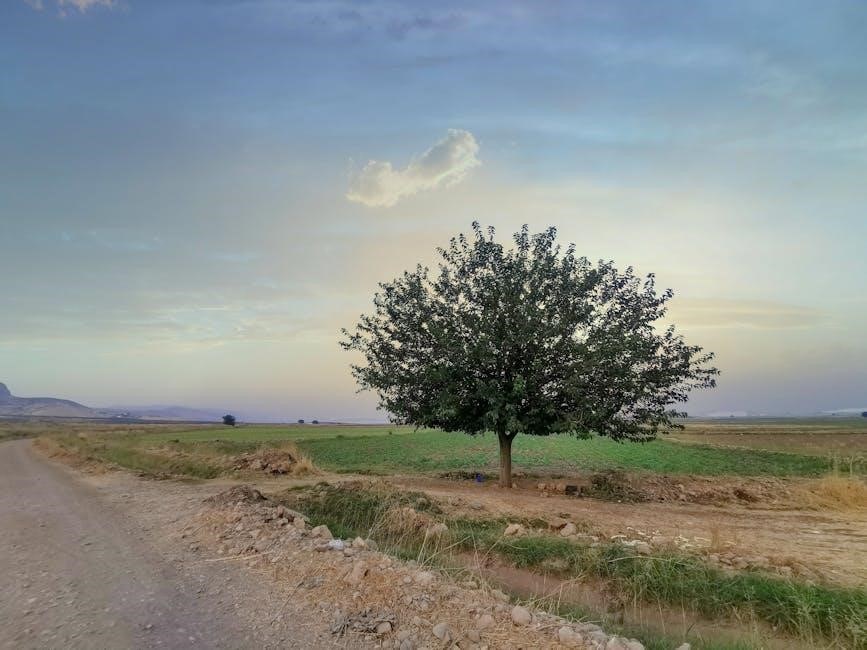
6.2 The Role of Anthropology in Understanding Migration
Anthropology plays a crucial role in understanding migration by providing a human-centered perspective on the complexities of movement. In “The Land of Open Graves”, Jason De León employs ethnographic research to uncover the lived experiences of migrants, offering insights into the socio-political and economic factors driving their journeys. Anthropology’s emphasis on participant observation and long-term fieldwork allows for a nuanced exploration of how migrants navigate perilous landscapes like the Sonoran Desert. By situating migration within broader cultural and historical contexts, anthropology bridges the gap between policy and human experience, revealing the deeper structural issues that shape global mobility and its consequences.
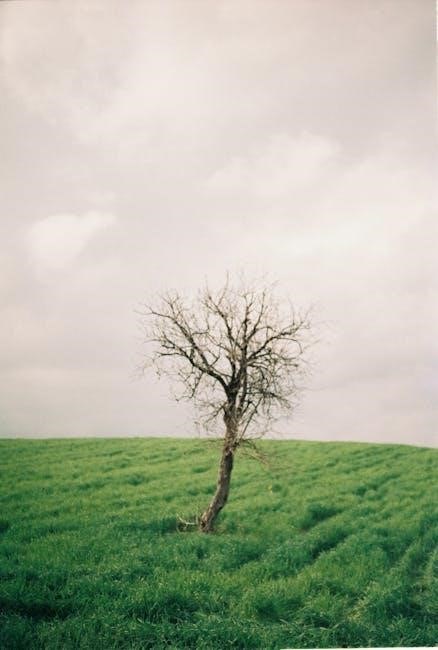
The Role of Photography
Photography in The Land of Open Graves vividly captures the harsh realities of migration, using haunting images to convey the migrants’ struggles and humanity.
7.1 How Photography Conveys the Book’s Message
Photography in The Land of Open Graves serves as a powerful medium to convey the book’s message about migration and its human cost. Michael Wells’ haunting images capture the stark reality of the Sonoran Desert, where migrants face extreme conditions and often lose their lives. The visuals juxtapose the beauty of the landscape with the tragedy of abandoned belongings, weathered shoes, and human remains. These photographs evoke empathy and awareness, forcing viewers to confront the harsh consequences of U.S. border policies. By documenting the migrants’ journey, the images humanize their stories, emphasizing their resilience and the dignity often stripped away by circumstances.
7.2 The Ethical Considerations of Documenting Suffering
Documenting suffering, as seen in The Land of Open Graves, raises significant ethical concerns. Photographer Michael Wells and anthropologist Jason De León grapple with the moral implications of capturing such distressing scenes. There is a delicate balance between raising awareness and exploiting the suffering of others. The book addresses these concerns by ensuring that the narratives remain respectful and focused on the migrants’ humanity, rather than sensationalizing their plight. The ethical approach emphasizes consent, dignity, and the responsibility to represent stories truthfully without voyeurism. This careful documentation ensures that the migrants’ voices are heard and their memories honored.
Critical Reception
The Land of Open Graves has received widespread acclaim for its powerful critique of border policies and emotionally charged portrayal of migrant struggles, resonating deeply with readers.
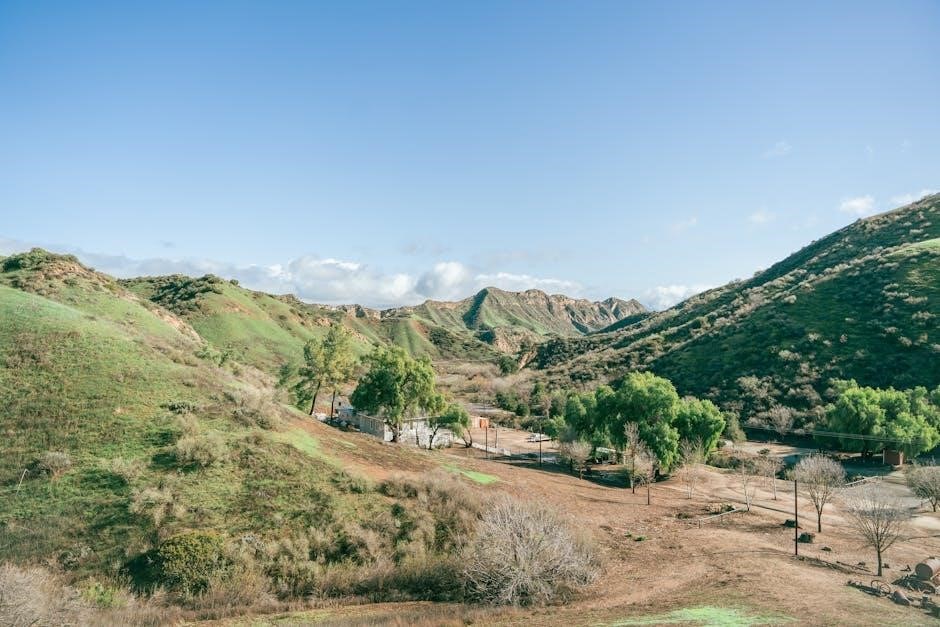
8.1 Reviews and Academic Response
The Land of Open Graves has garnered significant academic praise for its unflinching portrayal of migrant struggles. Scholars commend its interdisciplinary approach, blending anthropology and photography to highlight the human cost of border policies. The book has been lauded for its ability to evoke empathy while providing a critical analysis of systemic issues. Many reviewers emphasize its importance in migration studies, noting how it challenges prevailing narratives and sparks necessary discussions. The collaboration between De León and Wells is particularly highlighted, with the photographs serving as a poignant complement to the text. This work has become a pivotal resource in understanding the complexities of migration and its dire consequences.

8.2 Public and Media Reception
The Land of Open Graves has sparked widespread public debate and media attention, particularly for its vivid portrayal of migrant struggles in the Sonoran Desert. The book has been praised for its ability to humanize the statistics of border crossings, resonating deeply with readers. Media outlets have highlighted its emotional impact and the importance of its message in contemporary discussions on immigration. Educators and activists have embraced the book as a powerful tool for raising awareness about the human cost of border policies. Its accessibility and compelling narrative have made it a significant work in public discourse on migration issues.

The Book’s Contribution to the Field
The Land of Open Graves significantly advances migration studies by documenting migrant experiences and challenging policies through anthropological insights and visual storytelling.
9.1 Advancements in Migration Studies
The Land of Open Graves offers a groundbreaking perspective on migration studies by blending anthropology, photography, and personal narratives to illuminate the human cost of border policies.
9.2 Impact on Policy and Public Awareness
The Land of Open Graves has significantly influenced both policy discussions and public perception by exposing the harsh realities of migration. Its vivid portrayal of migrant suffering in the Sonoran Desert has sparked widespread empathy and debate. The book’s documentation of border policies’ consequences has prompted calls for reform, urging policymakers to reconsider humanitarian approaches; By sharing personal stories and data, it bridges academia and activism, fostering a deeper understanding of migration’s complexities. This work has become a catalyst for advocacy, inspiring efforts to address the root causes of migration and improve conditions for those crossing borders. Its impact continues to grow.
The Land of Open Graves offers a profound examination of migration’s human cost, urging a compassionate reckoning with border policies and their devastating consequences. The book’s impact endures.
10.1 Summary of Key Points
The Land of Open Graves is a powerful exploration of migration, highlighting the human cost of crossing the Sonoran Desert and the impact of U.S. border policies. Through personal stories, data on migrant deaths, and haunting photography, the book reveals the harsh realities faced by undocumented immigrants. It underscores the ethical dilemmas of documenting suffering and the role of anthropology in understanding migration. The collaboration between Jason De León and Michael Wells creates a vivid narrative, emphasizing the need for compassion and policy reform. This work serves as a critical resource for migration studies, urging readers to confront the humanitarian crisis at the border. The book’s message lingers, prompting reflection on justice, humanity, and the consequences of political decisions. By blending research and art, it offers a poignant tribute to those who have lost their lives in pursuit of a better future. The book’s impact lies in its ability to humanize a often-depoliticized issue, reminding us of the lives behind the statistics. Ultimately, it calls for a more inclusive and empathetic approach to migration, challenging readers to rethink their assumptions about borders and belonging. The legacy of The Land of Open Graves lies in its unwavering commitment to telling the stories that demand to be heard.
10.2 Final Thoughts on the Book’s Significance
The Land of Open Graves stands as a profound and necessary work, bridging academia and activism to illuminate the invisible lives lost in migration. By weaving personal narratives with data and visuals, it humanizes the crisis, urging readers to confront uncomfortable truths. The book’s significance lies in its ability to spark empathy and provoke critical dialogue about border policies and human rights. Its interdisciplinary approach makes it a vital resource for understanding migration’s complexities. Ultimately, it serves as a poignant reminder of the lives behind the statistics, demanding justice and compassion in one of the most pressing issues of our time.